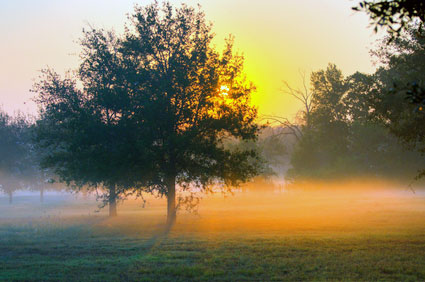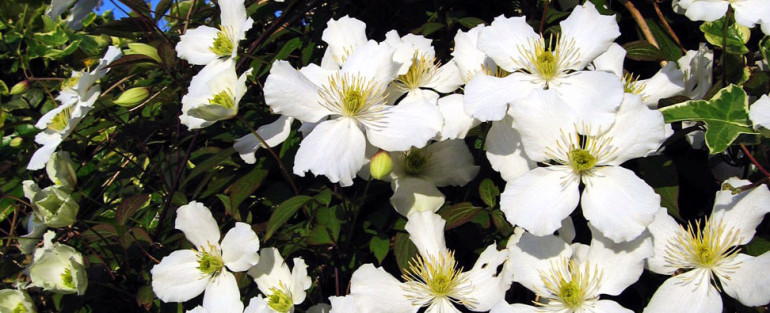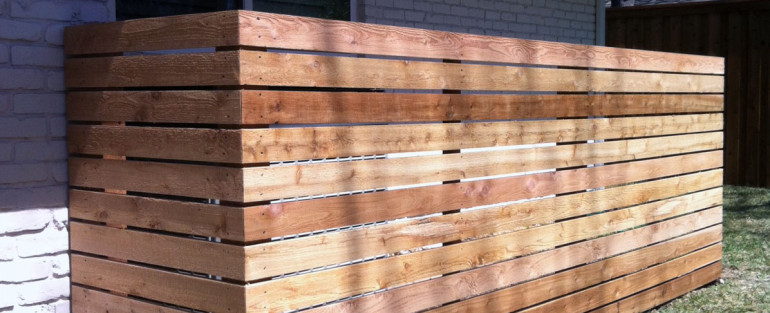
Summer is a time of scorching heat in Texas. Whether you have been living in the state for years or just moved away from another area, Texas has an extreme range of temperatures from well over 100F in the summer to below freezing in the winter for some areas. Your lawn needs to be prepared for these extremes.
So, what can you do to get your lawn ready, plus enjoy the summer weather to the fullest? Maybe you need to look into gate repair for your garden or lawn gates, set up a natural pond, or install a patio. Whatever you need, you should get started now.
Get Started Early
You can begin by choosing the best grass type for Texas. Your local garden supply store will have seed that is appropriate for your area. Ordering from online sources or catalogs can be dicey as quite a few of the most lush looking varieties will wither in the Texas sun. Prepare your lawn early by planting the right grass seed.
In the fall you can prepare for the next summer by putting one last fertilizer application on before the growing season ends. You may use chemical fertilizer or compost. Using compost has the added benefit of rotting throughout the winter and spring, this releases nutrients over time and can feed your lawn for months.
Watering
We all know that Texas is hot. The beating sun can kill even hardy grass types when there are extended periods without rain. Watering your lawn is an important part of keeping it healthy throughout the summer. Due to drought conditions, this can be a problem in Dallas. Many times there are water restrictions put in place during the hottest part of the summer.
Another thing to keep in mind is to water around the fence, just as you would a foundation. By watering around the fence line you’re helping to keep the gate in adjustment and prevent fence posts from moving. You never want to go from drought conditions around your fence to boggy water-ladened swamp, keep a nice moderate soil saturation for the best results. This will keep your fence and gate investment protected.
One way to beat the water restrictions is to install rain barrels and gray water disposal. Gray water is the water left over from washing clothes, bathing, and doing dishes. You can divert this water from your septic system into a large container system. This water needs to be filtered before it can be used in the lawn. Sand filters can be used before the water reaches the holding tanks or directly after leaving the tank. Gray water is a valuable resource when there are water use restrictions – you can have a lush lawn and garden even in the hottest days of summer.
Decoration and Privacy
While you want your lawn to be gorgeous, grass is only one consideration. Flowers add beauty to your lawn. As with grass, choose flowers that are suited for your area. Many beautiful flowers will not live even a few hours in the mid-day heat of high summer in Texas, even with intense watering. Look for native plants – these Texas and SouthWestern native plants will give your lawn a gorgeous look and will come back year after year.
A wooden fence around your yard or back patio can give your lawn privacy and beauty. You can build your own fence or use a fence contractor for the fastest, professional installation. Nosy neighbors or wandering animals can ruin the nicest of lawns – you can’t enjoy your yard when people are staring or dogs are digging holes! Such a fence can also provide safety from wandering coyotes, even in urban areas these wild canines cause problems. If you already have a fence, check your gates. A strong gate can deter animals and burglars. If it isn’t strong enough, consider a gate service for repair or installation.
You don’t need to put in a lot of work all at once to keep your lawn in great shape. You can spend a few weekends getting your property in shape or spread the work out over several months. A professional service can help with clearing property, installing fences or patios, and almost any other yard project you need completed to get your yard in shape for the Texas summer.
You’ll be happy with the final results if you spend a lot of time planning and a little elbow grease on your preparations. When you’re enjoying your pool, barbeque, or just sitting in the shade with a glass of iced tea, you’ll be glad you prepared ahead.

If you have animal companions, you know the importance of allowing them access to the outdoors to run, play, investigate their yards and take in fresh air. You are probably also concerned with the safety issues involved with keeping them confined to your property while keeping uninvited animal guests out.
Properly installed, intelligently selected fencing around your outdoor spaces makes all the difference in allowing a pet access to enjoy sufficient exercise outdoors, and a confined, unhappy animal. There are many different animal-oriented fencing options available, each with its own benefits and drawbacks. Here are some fencing basics to help you choose the right fencing choice for you, your pet and your property.
Dogs
Many dog owners don’t feel they have the time or ability to take their pet on multiple daily walks, and most cities and towns have leash laws and ordinances prohibiting dogs from running loose without supervision. Chaining is never the answer, but there are a few fencing options available:
- Dog runs – Typically constructed from chain-link fencing, they provide an outdoor exercise area and visual access. Newer innovations feature an attractive vinyl coating as well as powder coated pipe to dress up the look of boring galvanized chain-link fencing.
- Invisible fencing – Requires the use of installed underground wires around your property perimeter, transmitters and clunky collars. When your dog approaches the boundary, they are given a static energy pulse, mild shock, citronella spray or unpleasant noise. After time, some dogs become used to the shocks, noise or smell, and it no longer serves as a deterrent. Some city ordinances ban electronic containment systems, or require special permits. The main flaw in invisible fencing is that while it may keep your pet contained, it does not prevent other animals or people (who may do your pet harm) from entering your property.
- Traditional fencing — The best overall solution for most dogs are fences made out of solid wood materials. They secure your dog, keep out other people and animals, and are an attractive addition to your landscape. In addition, they prevent your dog from looking beyond his immediate territory, which is helpful for dogs more prone to barking. Tall privacy fences are suitable for large jump-happy breeds, and they can be installed with a dig-proof footing for thwarting diggers.
Cats
Most people would like to allow their cats outside access, but worry about roaming issues and predators. However, keeping your cat indoors can result in a fat cat. Over 50 percent of felines were found to be overweight or obese in a study by the APOP (Association for Pet Obesity Prevention) in 2011. Inactivity predisposes your cat to sedentary obesity and diabetes. Better solutions for cats are:
- Vinyl-coated chain link – Allows your cat free reign of your yard. They look good, provide safety, and are difficult to climb. Combined with a cat-proof fence conversion system, you never have to worry about Fluffy wandering the neighborhood. The conversion systems easily attach to chain-link fences with bolts, and feature a spring-loaded arm and baffle that folds under your cat’s weight, to deter even the wiliest escape artist.
- Wood fences – Best for homes with a cat and dog duo. They are easily fitted with a fence conversion kit. An added plus is that they serve double duty as a scratching post, to spare your furniture.
When shopping for fencing for your companion animals, be sure to work with an experienced fencing contractor who will consider your needs, preferences and budget to arrive at the best solution for your pet-friendly fencing project.

While there are many plants you don’t want to go around fencing, ones that have roots that can destroy the fence, there are still many pretty flowers and plants that can go around the fence area. Here are some ideas that can work well in flower beds that are near fencing.
Clematis
With over 400 cultivars, you’re bound to find one of these that will work for you. Semi-woody vines have saucer-shaped flowers in any color you care to choose. Have these trail along the pickets of the fence for the most dramatic effect.
Cherokee Rose
This climbing rose has a wonderful cream-white color on vine-like canes. It produces single flowers with glossy light-green leaves. These are a wonderful addition to have on dark wood or white fencing.
Russian Sage
Grey-white stems with silver-grey leaves and lavender flowers. This subshrub has a great aroma and can be a lovely addition to fencing that is around a patio, so guests can smell the richness of the plant.
Black-eyed Susan
Yellow-orange blooms with a dark center stand erect and daisy-like on stems. This is a summertime favorite and one that will work with just about any other type of plant. This is a good addition for a border plant and for those that like the classic feel of a daisy-like bloom.
Flowers and plants around a fence can make a dramatic statement and really add life to the straight line of a fence. It makes landscaping easier when you don’t have to mow near the fence, and it can be a nice visual to help increase the value of your home. If you don’t have flower beds around your Dallas, Texas fencing, give some of these great choices a try.

Your property is a huge investment and it is only natural that you want to protect and beautify it. Having a fence installed is an essential step in security and a large investment for an owner. Choosing the right fence contractor for the job is vital to prevent complications from developing at any point during, or following, the installation.
There are seven basic approaches that can protect you, your property, and your investment.
Research
Before interviewing any fence contractor you can learn a great deal about the individual or company that you are dealing with through your first encounter. Here are a few things to be concerned with:
● When you call the office, there should never be a generic answer to the call. Any professional company will have a professional answer to their phones which should include the name of the company.
● Any advertising should include a verifiable address. Many fly-by-night services will not have a legitimate address to be traced to.
● Never hesitate to check listings with the Better Business Bureau. This is a free service to aid consumers.
● While it is an initial jerk reaction for individuals who are looking at listings to select the first company they come to. Keep in mind that a company that is listed at the top of a search or a phone list, is not an indicator of their ability.
Red Flags for Interview
As you work through the process of finding your contractor some additional items you should keep in mind include:
● A contractor which requires you make an immediate decision should make you nervous.
● Anytime a professional pressures you to pay cash is never a good sign. There are some legitimate businesses which will provide their customers with a cash discount, which should not be confused with the contractor which requires you to pay cash only.
● Any professional contractor will give you a written estimate for the services you are requesting, if they will not give you one, you do not want to do business with them.
Necessary Questions
Some other details to bring up as you speak with your fence contractor, or potential contractor include:
● What materials do they recommend and why?
● If you are replacing, or repairing your fencing ask what their procedures include.
● What is the track record for the contractor staying within the estimate amount?
● How often do they finish on time?
● Is there any type of warranty on the work they provide?
● Will any of the materials you currently have be able to be used or recycled in the installation/repair?
Always speak to multiple contractors and get their written estimates.
Planning 1-2-3
1. As you make your plans for your fence you will need to make an assessment of how much you are willing to spend for the materials and labor. Once you have made these decisions you will need to share the information with the fence contractor and then confirm that they will be able to work within these guidelines.
2. Determine where you want your fence to run. Will it incorporate the entire land or only a portion? Do you want to include different types of fencing, such as one close to the residence and a different form further away.
3. Look at magazines and other properties to get an idea of what you want, give the pictures to the fence contractor to develop a clear idea of what you want. Never be shy about asking for design ideas or help.
Establish Timeline and Contact Person
As you move forward, you will want a definitive timeline of when the work is expected to be completed. Determine if there will be any discounts for delays or inability to reach the set goals.
On large jobs there are often multiple people that will be accomplishing the work, find out who the direct responsible is, in the event of any problems or questions.
Guarantees
Some contractors will provide a guarantee on their work. Ask about any guarantees that the company provides for the job.
Depending upon the materials you select for your fencing, there may also be a warranty on it. Many manufacturers of automatic gates often offer extended warranties of up to 7 years.
Payment
You will need to ask what the company policy is regarding the work. Some companies require full payment up front, others partial payment, or at the end of the job.
Will they finance? Do they accept credit cards, and which ones?

As spring rolls around there is always a long list of things that need to be addressed to get taken care of for the new year. House repairs and maintenance, even lawn care. People often forget about the needs of their fence. No matter what the materials are that you choose to use in the fence structure, whether it is automated or manual, there are a few things to do which will extend the life of your investment.
Your first step is to always do a thorough inspection of the entire fence. You need to look for any areas that are compromised, which may include rot, damage, leaning, and weak points. This includes the posts, pickets, wiring, and gate closure or function. Be aware of any places where the screws, wiring, or nails need to be replaced or tightened.
Once you have performed your inspection you will need to make the necessary plans to repair or replace any areas that are no longer stable. Addressing larger sections and posts may require professional assistance to prevent damaging other sections.
If your fence includes brick and mortar you will need to look for any cracks that have developed or any locations where the stone or brick has come loose. Depending upon the size of the crack, you can often fill this in yourself, however, larger problems should be taken care of by a professional.
We do not recommend adjusting or repairing any electrical features, such as lighting affixed to your fence. This might turn into a dangerous exercise and it is easier to have someone with experience take care of this.
When it comes to gates you need to pay close attention. Depending upon the type of gate you have installed, it may require the hinges and/or wheels to be lubricated. This will aid in keeping the gate functioning smoothly and in the case of automated gate systems it can prevent causing damage to the mechanical devices attached to it, which could lead up to substantial costs in the future.
It’s also important to check the pulley system which moves your gate. The wiring should not be frayed in any way.
If you have elected to use a sliding gate you should take the time to assess the area the gate is being drawn across. Surfaces that are paved should be repaired if there are cracks or holes, and dirt locations should be kept as level as possible. An automatic gate will also require you to clear any debris or obstruction along the path which it is being drawn across. You may need to trim trees or bushes to prevent interference with the proper function of the gate.
Your fence plays an important role in the security of your property, it was a considerable and worthwhile investment and providing some basic spring maintenance will keep it beautiful and functional for years to come.


